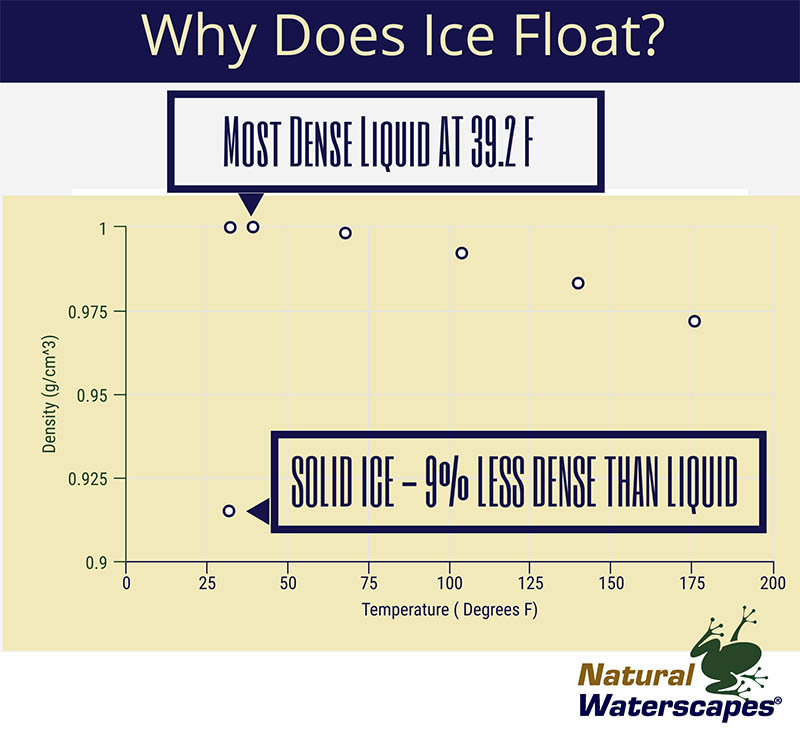Cold Weather Pond Care Tips
When cold weather drops temperatures below freezing suddenly, ponds and lakes are often impacted by the rapid change. This is particularly true in warmer climates where freezing temperatures are rare. Here are a few causes of disruption in the aquatic ecosystem and key actions to take as soon as possible.
What happens to a pond or lake when the temperature drops quickly? Water has some interesting properties that cause it to be most dense just above the freezing point. What that means in a sudden cold snap is that rapidly cooled water will fall to the bottom of the pond, forcing warmer water to the surface. The pond can rapidly turn over creating water quality issues in older ponds. It may also result in cloudy or murky water. If the pond or lake does not have an aeration system or other form of circulation, the effects of rapid turnover can cause a drop in dissolved oxygen which is critical for fish health. See below for 5 steps that you can take to protect aquatic life after a sudden cold blast.

- Monitor Dissolved Oxygen. Ice cover can trap gasses in the water and reduce dissolved oxygen available to fish. If there is an aeration system on the pond, continue to operate it during the cold snap. A sudden cold blast can kill vegetation on the pond margins and even in the pond. The additional biological oxygen demand (BOD) from the decaying vegetation can also lower dissolved oxygen in the weeks and months after the cold weather departs. If there isn't a good aeration system in place, one should be installed as soon as possible.
- Test water. It is wise to monitor key water quality parameters any time that rapid cooling and turnover happens. Alkalinity, pH, Nitrate, Ammonia, and Phosphorus should be tested. Pond water samples are easy to collect and most laboratories can process the samples. A water quality professional can help interpret the results.
- Do not apply herbicides. While it may seem like a good time to get ahead of aquatic weeds, treating with aquatic herbicides should be avoided for 4 weeks after a sudden cold snap.
- Expect cloudy water. It is very likely that the water will become cloudy or even downright brown. This is due to disturbance from the rapid turnover which can stir up bottom sediments. This also releases Phosphorus in the water. Increased Phosphorus concentrations lead to poor water clarity and can also trigger significant algae blooms. A Phosphate binder will help clear the water and reduce the risk of a large algae bloom. Once the water is cleared and Phosphorus levels decline, pond dye can also be applied to limit algae blooms.
- Restart beneficial bacteria treatments. A healthy population of beneficial bacteria will help a water body recover quickly from sudden cold weather. Apply a cool water blend of bacteria, such as WinterGard, as soon as the ice begins to melt. Repeat the application every other week for best results.
